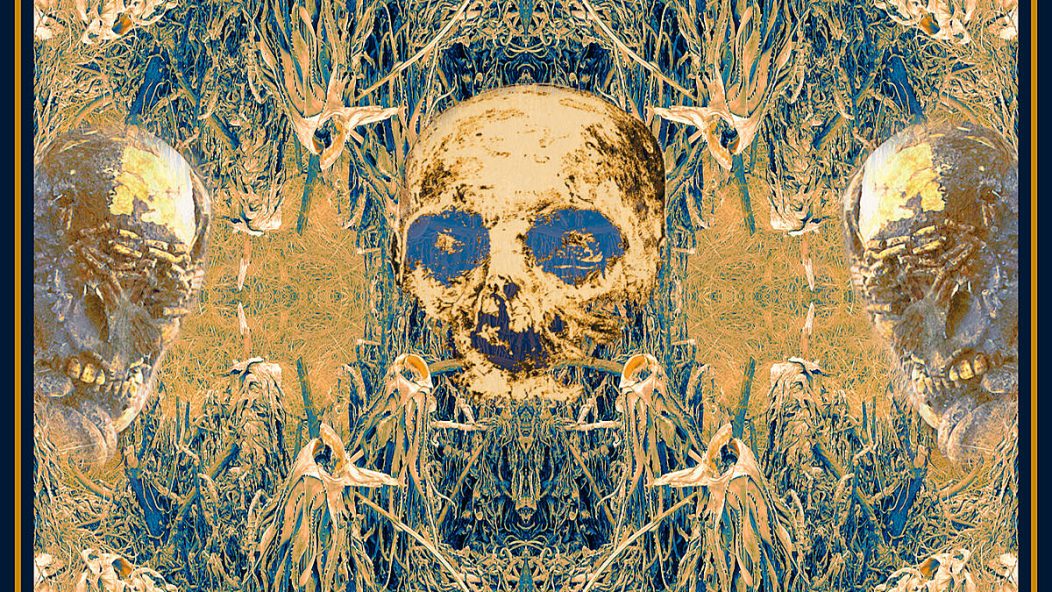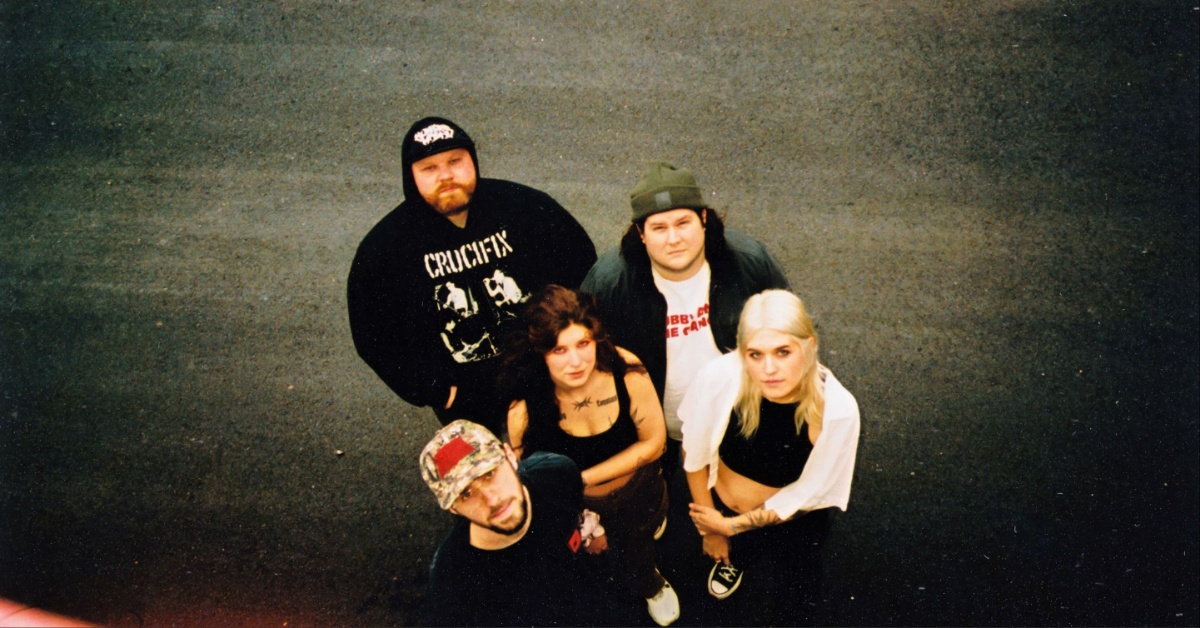
Kostnatění Toys With World Music And Black Metal (New Song Debut + Interview)
Have you ever listened to something so bizarre that it’s truly disorienting? Kostnatění has consistently been one of those bands for me. Helmed by the prolific D.L. (Glass Shrine, Hornet Murmuration et al), the Kostnatění project is an amalgam of strange time signatures, microtonality, folk rhythms, and, of course, black metal, resulting in a dizzying type of music unlike anything else I’ve actually ever heard. On new song “Nevolnost je vše, čím jsem” (trans. “Nausea Is All I Am”), which is streaming below, D.L. pulls out all the stops, and it’s honestly a difficult listen, but with a little dissecting the rewards outweigh the confusion. That being said, what D.L. crafted here is, to reuse a word, disorienting. Music like this, with inspiration taken from Turkish and African folk musics, to Western ears, is hard to listen to, but with the right fine tuning, it is quite beautiful. Listen to “Nevolnost je vše, čím jsem” and read an interview with D.L. below.
…
…
Kostnatění has always toyed with musical concepts like dissonance and microtonality, but both those elements have come to a head on Úpal. How did you find yourself approaching these two elements in your music this time around as opposed to previous Kostnatění releases?
There is only so far you can go with dissonance and microtonality at face value, and the first album Hrůza zvítězí was a fun first experiment with a lot of the chord structures that produce those effects–I didn’t see the purpose in simply rehashing that album moving forward. Shortly after Hrůza zvítězí, I decided to put into practice my love of Turkish folk music with the material that became last year’s EP Oheň hoří tam, kde padl. Through that exercise, I was able to internalize in my guitar playing the idea that in some musical traditions, dissonance and microtones are not inherently “harsh” and can be used in a variety of ways, not just for making extreme metal “WAY heavier and even MORE brutal!”
For Úpal, the stated goal was to expand the project in all directions simultaneously–to take the nascent songwriting ideas and push them all one step further, no matter how contradictory the end result. For softer sections, that meant drawing upon various Middle Eastern and African folk traditions and making passages intentionally more folky, flowy and psychedelic. For heavier sections, that meant pushing the riffs from “intense” to “legitimately psychotic-sounding”. I want the heaviest parts of the album to make listeners feel the way extreme metal felt to me as a young teenager–legitimately deranged, dangerous, and sublime–before I had heard a couple thousand different metal albums and learned enough guitar and music theory to always understand what the band was doing behind the scenes. So in short, the dissonance and microtonal elements are definitely still present, but my hope is that the songwriting is fresh enough that they are not what the listener takes away from the overall experience.
What was originally appealing about fusing black metal with these global styles which might not be immediately or historically tied to it?
I have been fascinated with non-Western music for years; it is one of several creative dimensions through which new music can still excite me. In African and Middle Eastern music, I love the way that melodies trail on for longer than expected, soar then crash, etc. In these cultures’ pop music, I love the use of Auto-Tune to force glissando vocals into a rigid, unpredictable scale pattern (a great example of this, although not a particularly famous or influential one, is the song “Dhool Dhool Caashaqa” by Dalmar Yare). And a genre like black metal, which can really be any sort of sound on a somewhat aggressive distorted guitar, can readily accept any sort of influence you expose to it. Nowadays, I write for Kostnatění as if it simply reflects the summation of my collective musical interests, rather than selecting a specific set of artists and relying only upon them as influences for this project, then sectioning out all my other creative urges into other rigidly defined projects.
Do you feel black metal at large has stagnated in its stubborn rigidness?
I think the rigidity in extreme metal does create more projects with a smaller range of influences than if people tried to synthesize all their creative forces into a single project, and I tend to enjoy bands that resist the urge to do the former. But I’m past the days of prescribing what “black metal at large” should be doing. Taste is all so subjective, artists can do whatever they want. Most of my favorite black metal bands have only sprouted up in the past 15-20 years anyway, well past the ’90s explosion, so it’s not like I think the genre is in a state of artistic decline. Things are right where they need to be.
That is definitely a rare perspective, as people generally wish things were either more like the old ways or completely separate from them. At what I would describe as black metal’s cutting edge, how do you feel Kostnatění fits into the greater narrative?
Good question. I think the biggest change in modern black metal is that the obligatorily Satanic aspect has come and gone, other than for bands that are intentionally old-school. The trendiest new styles across black metal right now–blackgaze, dissonant black metal, atmospheric black metal–have all intuitively realized what I said earlier, that black metal is really just “any tremolo guitar music with drums,” and the anti-religious element has definitely taken somewhat of a backseat. For example, I definitely can’t imagine there being a deliberate “white metal” countercultural movement in the 2020s, or even the backlash that it inspired back then. Some traditionalists seem to lament the move away from Satanism as a cornerstone, but there’s plenty of evil and dread to be analyzed in the secular world. I think divorcing the genre from the themes that appealed to Scandinavian teenagers has expanded the scope of the music accordingly. For Kostnatění, I use black metal as a framework and shape it to suit my needs, like a lot of modern bands do. I probably still focus on The Metal Riff a lot more than similarly forward-thinking artists, though.
Do you feel Kostnatění is specifically black metal, or is black metal a means to an end?
Earlier on, I saw the project as explicitly and inherently black metal, but as the music evolves, that becomes less and less true. At this point I can’t imagine writing an entire Kostnatění album that does not resemble black metal at all, but certain moments and songs on this new album definitely break free of a black metal framework, and that is even more true of some already-recorded future material. I have always admired bands who sound like they avoid genre classification without even consciously trying, and it is one of the secondary goals I strive for in most music I write.
Are there any artists you feel an affinity for?
I’ll name some artists who inspired this record in terms of both musical influence and artistic spirit (if I had to list artists who influenced me in just one of those two aspects, the list would run into the hundreds): Rhinocervs and its associated projects as always, my friend Theophonos of Serpent Column, !T.O.O.H.!, early Slipknot, mid-era Daughters, Bölzer, Robbie Basho, Lift to Experience, and Zeki Müren.
Having made what you feel to be an unhinged record, do you feel there is more emotional ground Kostnatění can cover?
Definitely! So, generally speaking, when I listen to music, I prefer excess over restraint. When I first started writing music, I aimed primarily for immediately gratifying music and not much else. But recently I have started trying to write further outside of my comfort zone, even if it produces music I don’t enjoy as much as a listener. That was true for Oheň hoří tam, kde padl: the songs often ended up more repetitive and less immediately catchy than I would have preferred as a listener, but they needed to be longer-form or else they would just be black metal songs with a Turkish folk veneer, and I would have failed at my goal of creating a seamless, wholehearted blend of the two. Even on this new album, there are songs that I don’t enjoy as much, not because they’re objectively weaker material but because they were deliberately written to expand the range of acceptable sounds and moods under the Kostnatění banner, rather than written to appease my tastes as a listener. There is future Kostnatění material, either recorded or conceptualized, that will similarly push the limits of the project–and will definitely evoke different moods or atmospheres in the process.
Whether you love this album or hate it, I hope it’s unlike anything you’ve ever heard before.
…










